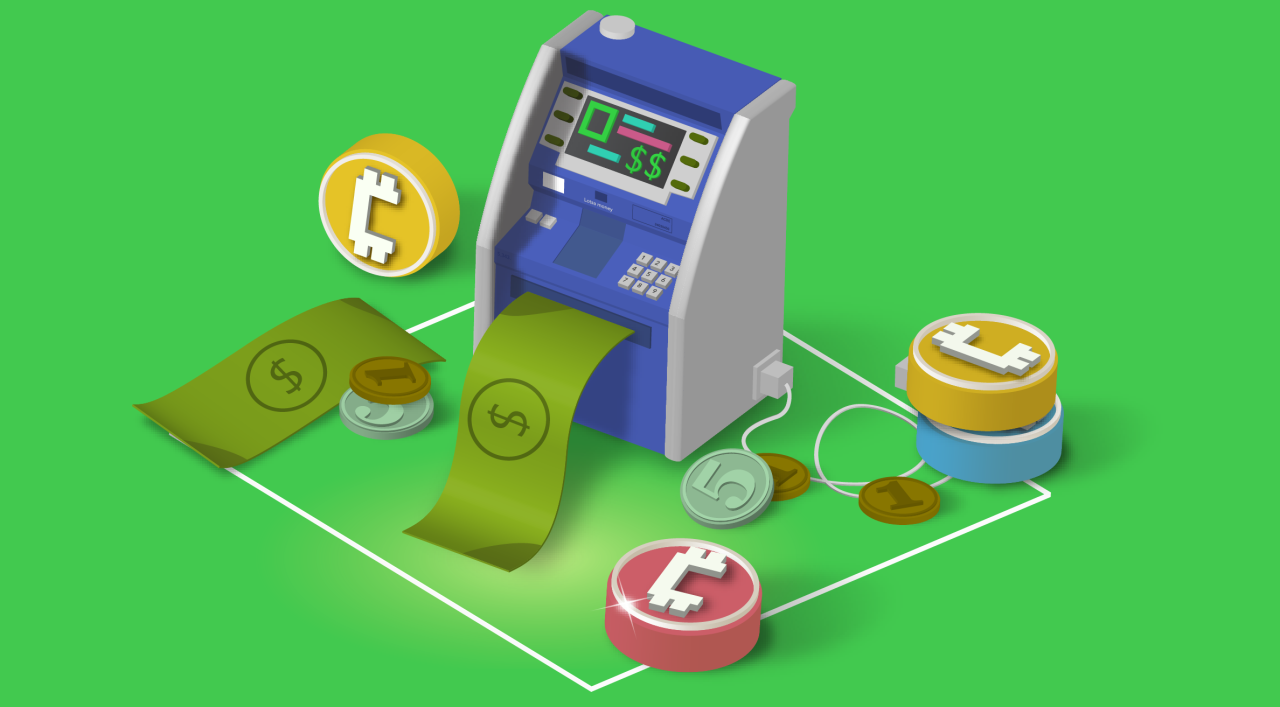The cryptocurrency market has evolved from a fringe concept to a significant, albeit volatile, force in global finance. What began with Bitcoin as an experimental digital cash system has blossomed into a multi-trillion-dollar ecosystem, captivating investors, technologists, and policymakers alike. Understanding the nuances of this rapidly expanding landscape is crucial for anyone looking to navigate its inherent opportunities and risks. This comprehensive guide aims to demystify the cryptocurrency market, offering essential insights into its underlying mechanics, key players, driving forces, and strategic considerations for investors. From fundamental blockchain principles to advanced market analysis, prepare to gain a clearer perspective on this transformative and often bewildering digital frontier.
What Drives Cryptocurrency Markets?

Unlike traditional stock markets driven by company earnings and economic indicators, cryptocurrency markets operate on a unique set of principles. Understanding these fundamentals is key to decoding market behavior.
A. Decentralization and Blockchain Technology
At its core, the cryptocurrency market is built upon decentralized ledger technology, primarily blockchain. This fundamental shift from centralized control defines much of its market dynamics.
- No Central Authority: Unlike fiat currencies issued by central banks or stocks traded on centralized exchanges, most cryptocurrencies operate on decentralized networks. This means no single entity controls the supply, transactions, or censorship.
- Transparency and Immutability: All transactions on a public blockchain are recorded and visible to everyone on the network (though identities are often pseudonymous). Once recorded, transactions are virtually impossible to alter, fostering trust and reducing fraud.
- Supply and Demand: Like any other asset, the price of a cryptocurrency is ultimately determined by the interplay of supply and demand. However, supply mechanisms can be vastly different (e.g., fixed supply like Bitcoin vs. inflationary supply).
B. Network Effects and Adoption
The value of a cryptocurrency often correlates with its network effects – the more users, developers, and applications built on its blockchain, the more valuable it becomes.
- User Base: A growing number of individuals holding and transacting with a cryptocurrency can increase its perceived value and utility.
- Developer Activity: A vibrant developer community building decentralized applications (dApps) and infrastructure on a blockchain (e.g., Ethereum) signifies strong ecosystem growth and future potential.
- Merchant Adoption: The acceptance of a cryptocurrency by businesses for payments can increase its utility and demand.
C. Technological Development and Innovation
The cryptocurrency market is driven by continuous innovation. New protocols, scaling solutions, and application layers constantly emerge, influencing market sentiment and asset valuations.
- Protocol Upgrades: Significant upgrades to a blockchain’s core protocol (e.g., Ethereum’s transition to Proof-of-Stake) can dramatically impact its efficiency, security, and investment appeal.
- Decentralized Applications (dApps): The development of compelling dApps in areas like DeFi (Decentralized Finance), NFTs (Non-Fungible Tokens), and GameFi (Gaming Finance) can drive demand for the underlying blockchain’s native cryptocurrency (e.g., ETH for Ethereum’s ecosystem).
- Interoperability: Solutions that allow different blockchains to communicate and transfer assets (e.g., cross-chain bridges) can enhance the overall utility and interconnectedness of the crypto market.
Key Players and Market Segments
The cryptocurrency market is diverse, encompassing various types of digital assets and participants. Understanding these segments is vital for informed analysis.
A. Bitcoin (BTC)
As the first and largest cryptocurrency by market capitalization, Bitcoin often acts as a benchmark for the broader crypto market.
- Store of Value: Its fixed supply (21 million coins) and deflationary nature often lead to its comparison with gold as a “digital store of value.”
- Market Dominance: Bitcoin’s price movements can heavily influence the rest of the altcoin market.
- Halving Events: Periodically, the reward for mining new blocks is cut in half, reducing the supply of new Bitcoin and historically leading to price surges.
B. Ethereum (ETH) and Smart Contract Platforms
Ethereum is the second-largest cryptocurrency and the leading platform for smart contracts and decentralized applications.
- Smart Contracts: Self-executing agreements whose terms are directly written into code, enabling automated, trustless transactions.
- Ecosystem Powerhouse: A vast ecosystem of dApps, DeFi protocols, NFTs, and other tokens are built on Ethereum’s blockchain.
- Layer-1 Blockchains (Alt-L1s): Competitors to Ethereum that also offer smart contract functionality, often aiming for better scalability, lower fees, or different consensus mechanisms (e.g., Solana, Avalanche, BNB Chain, Cardano).
C. Altcoins
Altcoins refer to all cryptocurrencies other than Bitcoin. They generally fall into several categories:
- Utility Tokens: Give users access to a specific product or service within a decentralized network (e.g., paying for transaction fees, voting rights).
- Governance Tokens: Grant holders the right to vote on proposals and decisions related to the development and future of a decentralized protocol (e.g., in DAOs – Decentralized Autonomous Organizations).
- Meme Coins: Cryptocurrencies primarily driven by internet memes and social media trends, often lacking strong fundamental use cases but can experience extreme volatility (e.g., Dogecoin, Shiba Inu).
- Privacy Coins: Focus on enhancing anonymity and privacy of transactions (e.g., Monero, Zcash).
D. Stablecoins
Stablecoins are cryptocurrencies designed to maintain a stable value relative to a specific fiat currency (most commonly the US dollar) or other assets.
- Purpose: Provide stability in the volatile crypto market, facilitate trading, and serve as a safe haven during downturns without converting back to traditional fiat currency.
- Types:
- Fiat-backed: Collateralized by reserves of fiat currency (e.g., USDT, USDC).
- Crypto-backed: Collateralized by other cryptocurrencies, often overcollateralized (e.g., DAI).
- Algorithmic: Rely on algorithms and smart contracts to maintain their peg (some have failed spectacularly, highlighting risks).
E. Decentralized Finance (DeFi) Ecosystem
DeFi is a rapidly growing sector using blockchain to recreate traditional financial services without intermediaries.
- Lending & Borrowing: Protocols where users can lend out crypto to earn interest or borrow by providing collateral.
- Decentralized Exchanges (DEXs): Allow users to trade cryptocurrencies directly with each other, often without KYC (Know Your Customer) requirements.
- Yield Farming & Staking: Strategies to earn rewards by providing liquidity or validating transactions on a blockchain.
What Moves Crypto Prices?
Understanding the factors that influence cryptocurrency prices is crucial for market analysis.
A. Supply and Demand Dynamics
The fundamental economic principle applies directly to crypto.
- Scarcity: Cryptocurrencies with limited supply (like Bitcoin’s 21 million cap) can see increased value as demand rises.
- Inflationary vs. Deflationary Models: Some cryptos have a continuously increasing supply (inflationary), while others have burning mechanisms or fixed supplies (deflationary).
- Halving Events: For Bitcoin, the periodic reduction in mining rewards halves the rate of new supply, historically leading to price surges due to reduced supply shock.
B. Macroeconomic Factors
The broader global economy, while seemingly distant, has an increasing impact on crypto markets.
- Inflation: Cryptocurrencies, particularly Bitcoin, are sometimes seen as a hedge against inflation due to their decentralized nature and fixed supply.
- Interest Rates: Rising interest rates in traditional finance can make riskier assets like crypto less attractive.
- Global Liquidity: The availability of capital in the traditional financial system can spill over into crypto markets.
- Geopolitical Events: Major global events (conflicts, policy changes) can drive market sentiment and lead to flight to safety (or risk-on behavior).
C. Regulatory Developments
Government regulations, or the lack thereof, are a major determinant of market sentiment and adoption.
- Clarity and Certainty: Clear regulatory frameworks can foster institutional adoption and mainstream acceptance.
- Crackdowns and Bans: Negative regulatory actions can trigger significant price drops and deter investors.
- Licensing and Compliance: New rules for exchanges and crypto businesses can impact market access and operational costs.
- CBDCs: The development and potential launch of Central Bank Digital Currencies could impact the role and value of decentralized cryptocurrencies.
D. Technological Advances and Roadmaps
Ongoing development within blockchain projects heavily influences their perceived value.
- Scaling Solutions (Layer-2s): Innovations that aim to increase the transaction capacity and speed of primary blockchains (e.g., Ethereum’s Layer-2 rollups) can enhance their utility and drive demand for their native tokens.
- Ecosystem Growth: New dApps, partnerships, and integrations within a blockchain’s ecosystem signal strength and future potential.
- Security Audits: Regular security audits and bug bounties demonstrate a project’s commitment to robustness, which is vital for investor confidence.
E. Media Hype, Social Media, and Celebrity Endorsements
The crypto market is highly susceptible to sentiment and speculative bubbles.
- FOMO (Fear Of Missing Out): Rapid price increases can lead to widespread FOMO, driving more speculative buying.
- Whale Movements: Large transactions by major holders (“whales”) can influence market sentiment and price action.
- Influencer Impact: Endorsements or discussions by prominent figures (celebrities, tech leaders) can generate significant interest and price pumps.
- News Events: Major hacks, project failures, or significant partnerships can lead to rapid price changes.
Analyzing the Crypto Market

Navigating the crypto market requires a blend of traditional financial analysis techniques and crypto-specific considerations.
A. Fundamental Analysis (FA) in Crypto
While different from traditional FA, it focuses on the intrinsic value and long-term potential of a crypto project.
- Whitepaper and Team: Analyze the project’s whitepaper (its technical blueprint and vision), the experience and reputation of the development team, and its advisors.
- Technology and Use Case: Understand the underlying blockchain technology, its consensus mechanism, scalability, security, and the real-world problem it aims to solve. Does it have a unique selling proposition?
- Tokenomics: Study the supply (total, circulating, max cap), distribution model, vesting schedules, and utility of the token. Is it inflationary or deflationary? Does the token have a clear use case within the ecosystem?
- Community and Adoption: Assess the size and activity of its developer community, user base, and partnerships. Is there real-world adoption?
- Competition: How does the project compare to its competitors in terms of technology, adoption, and team?
B. Technical Analysis (TA) in Crypto
TA involves analyzing past price movements and trading volumes to predict future price action. It’s widely used in crypto due to the market’s volatility and reliance on charts.
- Chart Patterns: Identify patterns like head and shoulders, triangles, flags, which might indicate future price movements.
- Indicators: Use tools like Moving Averages (MA), Relative Strength Index (RSI), MACD (Moving Average Convergence Divergence) to gauge momentum, overbought/oversold conditions, and trend strength.
- Support and Resistance Levels: Identify price levels where buying or selling pressure is strong, indicating potential reversals or breakouts.
- Volume Analysis: High trading volume often accompanies significant price movements, confirming trend strength.
C. On-Chain Analysis
This is unique to crypto and involves analyzing data directly from the blockchain ledger.
- Active Addresses: A growing number of active unique addresses can indicate increasing adoption and usage.
- Transaction Volume: Higher transaction volume can signal increased network activity and utility.
- Whale Movements: Tracking large transfers of cryptocurrency can sometimes precede significant price moves.
- Exchange Balances: Decreasing balances on exchanges can indicate coins moving to cold storage, suggesting a long-term holding sentiment.
- Mining Data: For Proof-of-Work coins, analyzing hash rate and mining difficulty can provide insights into network security and miner sentiment.
D. Sentiment Analysis
The crypto market is heavily influenced by sentiment.
- Social Media Trends: Monitor discussions on platforms like Twitter, Reddit, and Telegram for trending coins, FUD (Fear, Uncertainty, Doubt), and FOMO (Fear Of Missing Out).
- News Cycles: Major news events (hacks, regulatory announcements, institutional adoption) can trigger rapid shifts in sentiment.
- Fear & Greed Index: Aggregates various market factors to provide a sentiment score, ranging from extreme fear to extreme greed.
Strategies for Investors
Investing in crypto carries significant risks, but with a disciplined approach, it can be a part of a diversified portfolio.
A. Define Your Risk Tolerance and Investment Goals
- Highly Volatile: Acknowledge that crypto is a highly volatile asset class. Only invest what you can afford to lose.
- Long-Term vs. Short-Term: Decide if you’re a long-term holder (HODLer) or a short-term trader. Strategies differ significantly.
- Portfolio Allocation: For most investors, a small percentage (e.g., 1-5%) of a diversified portfolio should be allocated to crypto, treated as a speculative growth segment.
B. Start Small and Learn Continuously
- Education First: Never invest in something you don’t understand. Spend time learning the basics before deploying capital.
- Experiment with Small Amounts: Start with a small amount to get comfortable with exchanges, wallets, and transaction processes.
- Stay Informed: The crypto space evolves rapidly. Continuously read, research, and follow reputable sources.
C. Diversify Your Crypto Holdings
Avoid putting all your funds into one cryptocurrency, even Bitcoin or Ethereum.
- Spread Across Top Assets: Consider allocating to Bitcoin (store of value) and Ethereum (smart contract platform) as core holdings.
- Explore Promising Altcoins: Research a few altcoins with strong fundamentals, clear use cases, and active development teams.
- Avoid Over-Concentration: Limit your exposure to highly speculative or meme-driven assets.
D. Implement Dollar-Cost Averaging (DCA)
DCA is a powerful strategy for mitigating the impact of volatility.
- Regular, Fixed Investments: Invest a fixed amount of money at regular intervals (e.g., weekly, monthly), regardless of the asset’s price.
- Averages Out Purchase Price: This strategy helps average out your purchase price over time, reducing the risk of buying all your assets at a market peak.
- Removes Emotion: Automates investing and removes the temptation to time the market.
E. Secure Your Assets
Security is paramount in crypto; you are your own bank.
- Hardware Wallets (Cold Storage): For significant holdings, use a hardware wallet (e.g., Ledger, Trezor) to store your private keys offline, protecting them from online hacks.
- Software Wallets (Hot Wallets): For smaller amounts or frequent transactions, use reputable software wallets (e.g., MetaMask, Trust Wallet).
- Strong Passwords and 2FA: Always enable two-factor authentication (2FA) on exchanges and wallets, and use unique, complex passwords.
- Beware of Phishing and Scams: Be highly suspicious of unsolicited messages, links, or offers that ask for your private keys or seed phrase.
- Secure Seed Phrase: Your seed phrase (recovery phrase) is the master key to your funds. Store it offline, in multiple secure locations, and never share it.
The Future of Crypto Markets
The cryptocurrency market is still nascent and rapidly evolving. Several key trends are shaping its future.
A. Institutional Adoption
Increasing interest from large financial institutions (banks, asset managers, hedge funds) is bringing more capital and legitimacy to the market.
- ETFs: Approval of spot Bitcoin and Ethereum ETFs in major markets (like the US) simplifies access for traditional investors.
- Custody Solutions: Development of secure custody services for institutions.
- Integration into Traditional Finance: Bridging the gap between traditional finance and crypto.
B. Regulatory Clarity
As governments grapple with how to regulate crypto, increasing clarity is expected.
- Classification: Defining whether crypto assets are currencies, commodities, or securities.
- Consumer Protection: Implementing rules to protect retail investors from fraud and manipulation.
- Global Harmonization: Efforts to establish international standards for crypto regulation.
C. Continued Technological Advancements
- Scalability Solutions: Ongoing development of Layer-2 solutions and new Layer-1 blockchains to address transaction speed and cost.
- Interoperability: More seamless interaction and asset transfer between different blockchain networks.
- Real-World Asset (RWA) Tokenization: Bringing real-world assets (real estate, art, commodities) onto the blockchain, increasing liquidity and investment opportunities.
D. Evolution of Decentralized Finance (DeFi) and Web3
- Maturity of DeFi Protocols: Enhanced security, auditing, and user-friendliness in DeFi.
- Growth of Web3: Building a decentralized internet where users have more control over their data and digital identities.
- Metaverse and Gaming: Integration of digital assets into virtual worlds and play-to-earn gaming models.
Conclusion
The cryptocurrency market is an exciting, innovative, and undeniably complex frontier. It offers unprecedented opportunities for financial growth and technological advancement but demands a high degree of caution, continuous learning, and strategic management. By understanding its fundamental drivers, the diverse array of digital assets, and the various analytical approaches, you can gain valuable market insights. Approach this space with a clear investment strategy, an unwavering commitment to security, and a willingness to adapt. The digital economy is here to stay, and with informed decisions, you can confidently navigate the booming landscape of decentralized finance.



